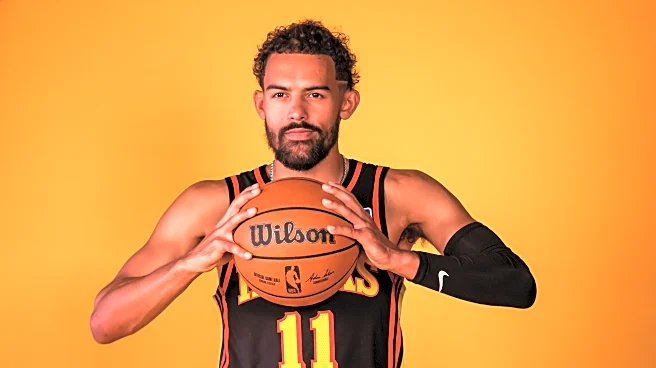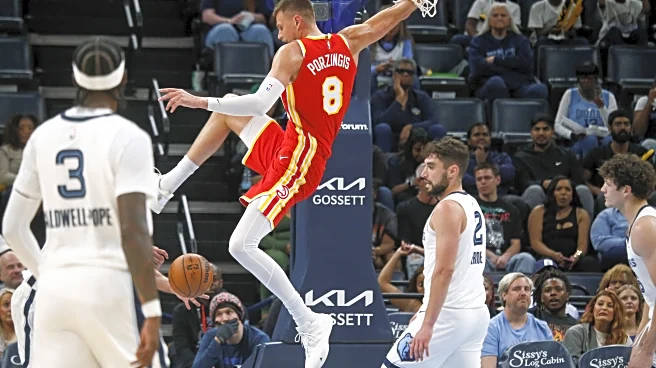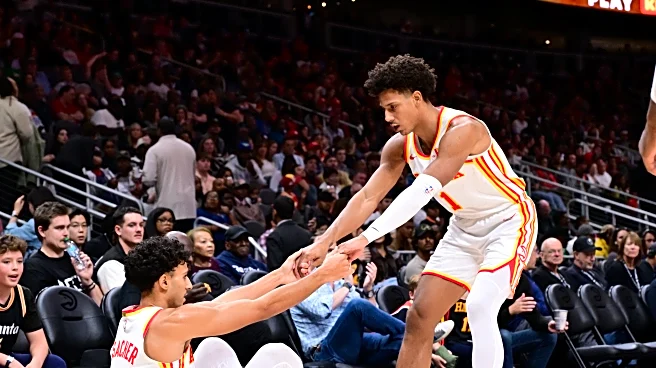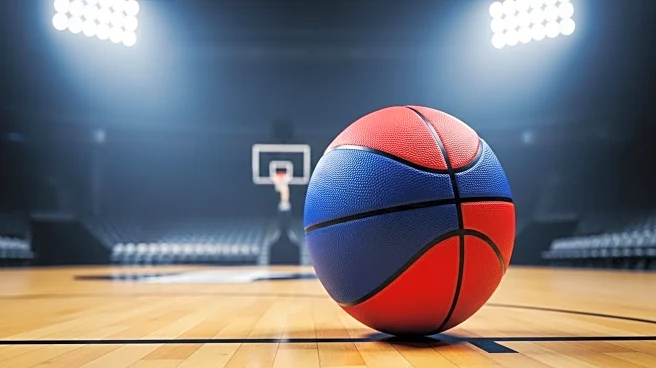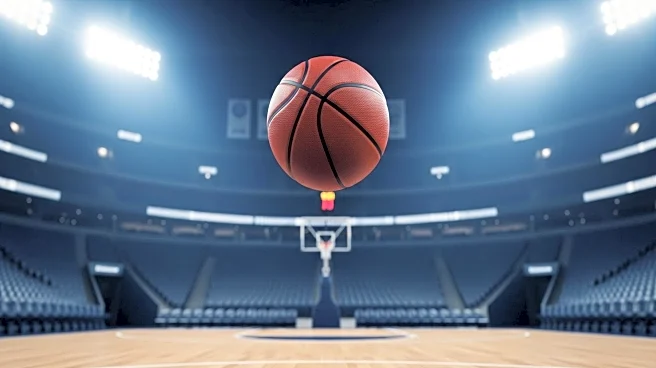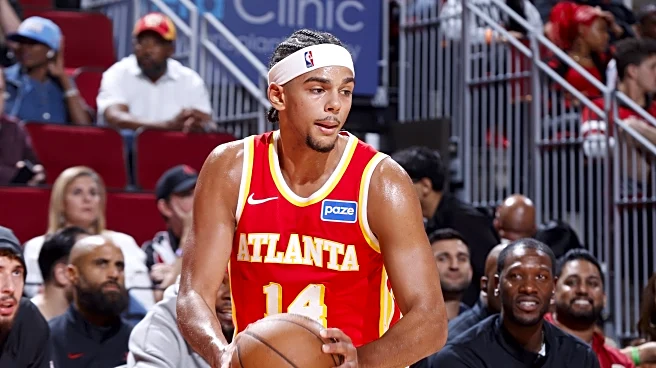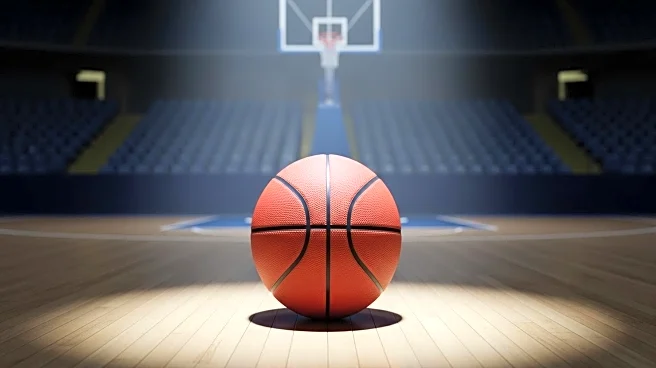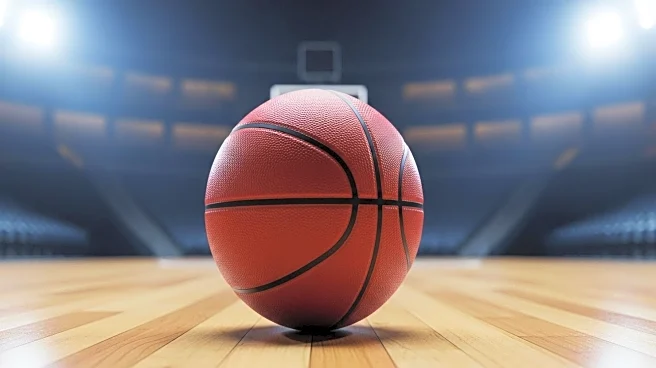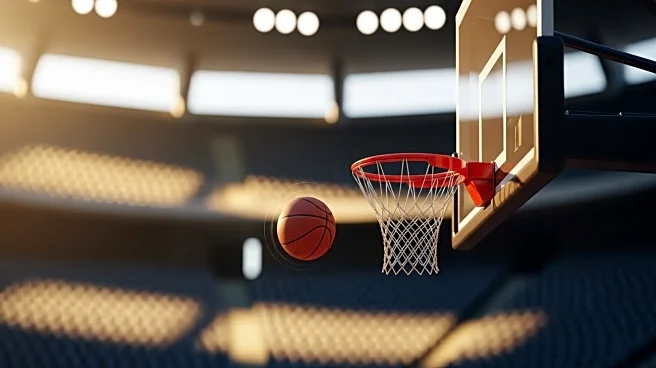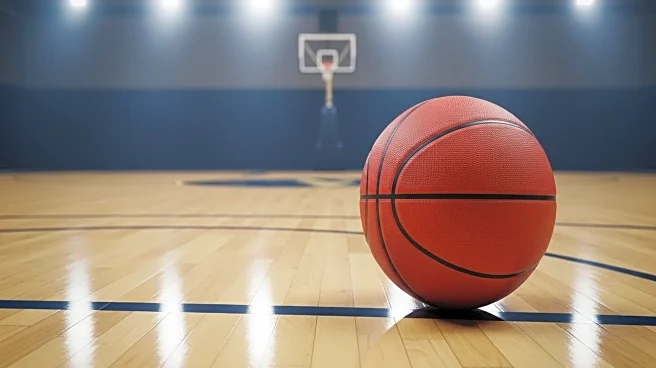Trae Young might be the most interesting player in the NBA as we approach the start of the 2025-26 season. Entering his eight year – and (in case you haven’t heard) the final guaranteed year of his contract
– Young finally has a roster worthy of his immense playmaking talent, and there will be a ton of eyes on no. 11 as he aims to lead this Atlanta Hawks team to perhaps, their first top-four Eastern Conference finish in his tenure with the franchise.
Young’s accolades speak for themselves. He is a 4-time All-Star, who ranks second to only John Stockton in all-time career assist percentage*. In 2021, he became the 10th player ever aged 22 or younger to average 25 points per game in the playoffs for a team that reached the Conference Finals**.
*The percentage of their teammates made field goals that a player assisted while on the floor. Young has a 44.6% career assist percentage, per Basketball Reference
**Luka Doncic (2022) and Anthony Edwards (2024) have since joined him on this exclusive list.
Last season, he became just the fifth player this century to average at least 11.6 assists per game over the course of a single season. He is the only player in NBA history to average 25 points and 10 assists per 75 possessions through the first seven years of their career.
That said, with those gaudy accomplishments comes a few hard truths. Young’s Hawks teams have finished above .500 just twice in his seven seasons with the team. They’ve made the playoffs thrice, and have advanced past the first round only once. While he has the capacity to fill up the points column, he ranks 39th in true shooting and owns the second-worst effective field goal percentage out of the 51 players who have averaged 20+ points per game over the past three seasons.
At 6’1”, 180 pounds, he has also ranked in the 8th percentile or lower in defensive EPM* in six out of his seven NBA seasons, making him shark bait on the defensive side of the ball in a league where offenses are becoming increasingly ruthless.
*One-in-all metric to capture a player’s defensive impact from dunksandthrees. More on EPM here.
Ultimately, this all adds up to a player whose status amongst the league’s preeminent offensive hubs is undeniable, albeit one whose impact on winning is less obvious.
So how can Young help the Hawks reach new heights in 2025-26? It starts with efficiency, which is something both he and head coach, Quin Snyder acknowledged at media day.
Snyder had this to say when asked about what he expects from his point guard this season:
“I think the key word for Trae is ‘efficiency’, whatever that looks like… I think what you’re going to see is Trae having to feel the game in a way to find the areas where he can contribute and be most efficient. There’s games where that’s going to mean scoring more, there’s games where that’s going to mean passing more. I think [one of] the constants is going to be him forcing the pace.”
“The other thing he’s got to do every night is be efficient defensively. People attack him because they know it has an impact on him offensively, they try to fatigue him. When you have a player that’s as good on the ball as Dyson’s been, they try to put Trae on the ball – it’s basic logic. So for Trae, understanding that and taking pride in what his job is on the defensive end, that leads to team efficiency on the defensive end.”
“The word I like to use with Trae all the time is ‘evolution’ and to me, his leadership is about him being efficient and doing the things on the court that help our team win. You prepare off the court for those moments, but I think his efficiency on the court, and him embracing that raises everybody’s level.”
For his part, Young agreed, saying that he was actually the first one to bring up the topic of ‘efficiency’ in his conversations with Snyder. Said Young, “as high as he [coach] sets the bar for me, I want to set it even higher.”
Starting with his offensive efficiency, Young averaged 24.2 points per game last season and led Atlanta to a 117.6 offensive rating (76th percentile relative to other five-man lineups) in his minutes, however he shot just 34% from deep and 47.4% from two-point range. The latter mark was a career low, undermined by a disappointing 52.5% conversion rate at the rim – the lowest field goal percentage (FG%) amongst players who took at least 200 rim attempts last season, per pbpstats.
Some will chalk these mediocre shooting splits up to the lack of offensive firepower in some of Atlanta’s lineups last season, ‘forcing’ Young into taking tougher shots than usual. However, digging into his shot quality metrics from last season courtesy of Bball Index*, it appears that his looks – at least from inside the arc, and especially at the rim – were more favorable than his FG% suggests.
As you can see in the table below, of the 71 players who averaged over 20 points per 75 possessions last season, Young’s rim shot quality ranked 16th, his midrange shot quality ranked 12th, while his three-point shot quality ranked 64th.
*Bball Index (great site) has a proprietary shot quality model that incorporates variables such as defender distance, shot location and play context

Zeroing in on the inside the arc scoring efficiency, while I’m not all that concerned about Young’s mid-range FG%*, he simply has to be better when it comes to finishing at the basket, and I expect he will be in 2025-26. With the additions Atlanta made this offseason, as well as the expected improvement from the players returning from last season’s roster, the Hawks should have more shooting and a bevy of offensive weapons to surround him with, making it harder for defenses to collapse on him when he drives to the hoop.
*Though it is worth noting that the league average FG% from the mid-range has ticked up over the past few seasons. In 2018-19, Trae shot 46% from ‘floater’ distance (FGA’s between 4-14 ft away from the hoop) during his rookie season, a mark which ranked in the 89th percentile relative to other point guards per cleaningtheglass. Last season, even though Young still shot 46% from this range, he ranked in just the 70th percentile relative to other point guards. Still good, but no longer an elite conversion rate.
The addition of Porzingis in particular should help draw at least one of the opposing team’s bigs away from the hoop, paving the way for even better looks for Young at the basket. It will be down to him to either convert these looks or draw a foul and get to the line.
As for his perimeter shooting efficiency, while a 34% mark from deep is not terrible, especially considering that Young ranked near the bottom of the league in three-point shot quality, I am curious to see whether Young can carve out higher quality looks from long range this season given Atlanta’s new offensive structure. What might this look like?
For one, I’d wager that a big reason why Young rated so low in three-point shot quality last season is because he led the league in average three-point distance* at 27.8 feet – four feet further than a three from the top of the key. Four feet! It would be one thing if Young was knocking these looks down at a respectable rate, but he shot just 33.2% on above the break threes last season – the fifth lowest mark amongst the 39 players who took at least nine such attempts per 100 possessions** – relative to 43.1% from the corners (albeit on a significantly lower volume of attempts).
*As of March 25th, 2024 – two weeks before the end of the regular season
**min. 1000 minutes played
I’m not saying that Young should eliminate the long-bomb three from his shot diet entirely. As (Hawks announcer) Bob Rathbun likes to remind us, it does indeed stretch defenses, forcing them to respect the fact that Young will fire away from anywhere on the court, which in turn creates more space for others on offense. I also believe that he’s talented enough to hit these shots when he is feeling it. But this is a new year with new offensive weapons. If there is adequate spacing in the halfcourt, Young won’t need to take as many difficult long-range threes which should help improve his efficiency.
Another thing that could have a positive impact on Young’s three-point shooting numbers this season is him embracing more of a catch-and-shoot role on offense. Young has consistently ranked near the top of the league in pull-up three-point attempts, yet over the past three seasons, he’s shot 36.5% on catch-and-shoot threes (1.5 attempts per game) relative to 34.6% on pull-ups (6.5 attempts per game).
While the Hawks don’t have a traditional backup point guard this season*, between Jalen Johnson, Dyson Daniels, Nickeil Alexander-Walker, Luke Kennard, Onyeka Okongwu and Vit Krejci, there isn’t a lack of playmaking talent on the roster. If Young can get off the ball earlier in the shot-clock and allow his teammates to create for him a little more often, this could lead to more catch-and-shoot three-point opportunities for him.
*That is unless Keaton Wallace or Nikola Djurisic can crack the rotation
At media day, Young spoke about how he plans to find the balance between initiating and deferring on offense this season, and it sounds like he plans to lean into a few more off-ball actions in 2025-26.
“Yeah, I think you’ll be able to see another element of my game that you haven’t been able to see. A lot of people like to say, ‘Trae can’t play with this person or this person because he loves the ball in his hand’… c’mon man. You’ll be able to see, like I’ve got a guy in KP who draws double teams, Jalen – if he’s healthy – you’ve seen what we’ve done together, he’s back now. So there’s elements of my game you probably haven’t seen yet, and adding guys that we’ve added this summer will allow me to play even more off the ball so I’m excited about it and I’m more ready to get it going than anything.”
Young shot 2-for-4 from deep in Atlanta’s first preseason game with both of his makes coming off of the catch, and I’m curious to see if this was just an anomaly or the beginning of a trend that continues into the regular season.
*Shoutout Hawks Film Room for the above clips, an excellent Twitter follow for all Hawks fans
One more area that’s worth mentioning when it comes to Young’s offense is that he did lead the league in turnovers last season, coughing it up 4.7 times per game. Of course, this number is less than ideal, that said, on a scale from 1 to 10, I’d only rate my level of concern at a 5. Given his usage rate, the pace Atlanta played at (third fastest in the NBA), as well as how much of the playmaking burden he had to carry, it’s unrealistic to have expected mistake-free basketball from Young last season. Atlanta’s offense still operated at a high level with him on the floor, and their team turnover percentage in his minutes ranked right around league-average.
Obviously it would be great to see Young cut down on his turnovers this season, however given his playstyle and the ability to push the envelope with his passing chops, I believe it’s alright to afford him a little bit of leeway in this area. You don’t average 11.6 assists per game by playing it safe, and I’d rather see Young be too aggressive than too conservative when it comes to playmaking on the offensive end.
Moving on to the defensive side of the ball, as discussed in the introduction, it’s not been pretty for Young over the course of his career and whether or not he can hold up defensively for four straight playoff series while maintaining his offensive production remains one of the biggest question marks regarding his long term value to a team with championship aspirations.
While he did look more engaged last season than he has in years past, the Hawks still posted a 116.8 defensive rating (35th percentile relative to other five-man lineups) and allowed a ton of shots at the rim in his minutes last season. Young personally ranked in just the third percentile in defensive EPM.
Though the defensive ceiling is always going to be low for a high-usage small guard, in Young’s case, there is still a lot of scope for improvement.
The good news is that Atlanta’s roster has been constructed with this in mind, and when they’re fully healthy this season, between Dyson Daniels, Nickeil Alexander-Walker, Kristaps Porzingis, Jalen Johnson, Zaccharie Risacher and Onyeka Okongwu, the Hawks can surround Young with at least three high level defenders at all times.
That being said, there’s still five players on the court, and as Snyder said, Young is going to have to “take pride” in his duties on the defensive side of the ball for this team to reach their ceiling. Young’s defense will be under the microscope this season. It will be interesting to see how he responds.
Lastly, Young’s contract situation is the elephant in the room in any conversations regarding Atlanta’s future beyond the 2025-26 season. Entering the final guaranteed year of his contract*, Young and the Hawks have yet to reach an agreement on an extension to keep the All-Star guard in Atlanta long term. In July, it was reported by ESPN’s Marc Spears that the contract stalemate between the two sides had been a point of consternation for Young this offseason, yet Hawks general manager Onsi Saleh and Atlanta’s front office have held firm on their stance, and with less than two weeks to go until opening night, it’s looking increasingly likely that this is a storyline that will drag on into the regular season.
*Young does have a player option for next season that he is all but certainly going to decline in favor of a more lucrative payday
Young is currently eligible to sign a 4-year/$229-million standard veteran extension starting at 30% of the cap in 2026-27 with 8% annual raises – an offer that has yet to be put on the table by Atlanta’s front office. Because Young has a player option for 2026-27, the two sides can carry on negotiating throughout the season*, however if they don’t come to an agreement before next summer, Young will be eligible for a 5-year/$288-million standard veteran contract** or – if he makes an All-NBA team this season – a monster, 5-year/$336-million supermax contract starting at 35% of the cap in 2026-27 with 8% annual raises.
* Provided that Young does not pick up his player option
** This deal would also start at 30% of of the cap in 2026-27 with 8% annual raises – though Young would be able to tack on an extra year by waiting until next summer to sign
While at first glance, it may seem logical for the Hawks to at least table the four-year maximum standard veteran extension. However given Atlanta’s cap situation, ownership’s aversion to paying the tax, and the fact that Dyson Daniels, Kristaps Porzingis and Luke Kennard are also set to be free agents at the end of the season, the reality is that it’s going to be extremely difficult to avoid paying the tax, extend Young at 30% of the cap, and keep the current top-eight intact, resulting in the hesitancy we currently see from Atlanta’s front office.
When asked at media day about whether there was any disappointment on his end about not getting an extension done, Young gave a professional response, saying:
“Um… I don’t know about the word disappointment. I mean, maybe. For me, I’m so focused, I’m more happy about the team we got heading into the season. For me, I’m blessed bro, I wasn’t stressing about anything, if something happened, it happened. If it didn’t, I still got time. Obviously everybody knows what my situation is going into the future so for me, I’m focused on this team, I’m focused on right now, I’m blessed, I’ve got a great team going into the season – one that I mean you can’t really say I’ve had so, I’m even more excited about that. Who knows what the future [holds] for me, but right now I’m here, I’m present, like me and coach have been talking about, so I’m excited about it and ready to go.”
Young is clearly a valuable player. He is the heartbeat of Atlanta’s offense. That being said, given his defensive limitations and the other contract situations the Hawks have to consider next summer, for a franchise that is, in the words of general manager Onsi Saleh, “looking to build something sustainable,” the number has to be just right.
This is a big year for the Atlanta Hawks, and perhaps, an even bigger one for Trae Young. For a player whose impact on winning has long been questioned, Young finally has the optimal roster around him to maximize his strengths and limit his weaknesses. Can Young get the most out of the Hawks new additions? Can he hold up defensively? Can he help elevate this roster into a fringe contender?
All these questions and more will be answered when the regular season tips off. Young is going to be a fascinating player to watch this season.
